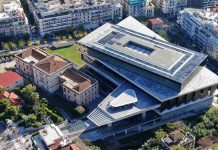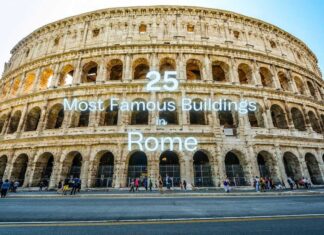Biomimicry is the combination of the words “bios” means life and “mimesis” means imitation in Latin. Biomimicry is imitatiting nature and what it designs, in order to find solutions to the problems for human designs. Besides, what can human, who is also created by nature, do other than follow the footsteps of nature in the works he/she will create?
Wherever I Look, I See You

It is possible to encounter biomimicry in many areas of our lives; the planes we fly, the ships we board, the communication devices we use and more… All of these things created with biomimicry… In fact, even in the things we think to be far from the nature, the wisdom of nature is hidden.
Biomimicry in Architecture – Pickle or Sponge?

Architects who design the space between nature and people, the places where people live, also benefit greatly from biomimicry. When you do research on biomimicry in architecture, the first building you will come across will probably be the 30 St Mary Axe, also known as The Gherkin building, designed by Norman Foster and has become one of the signature structures of the London skyline. Although the natural structure imitated by the building belongs to a sponge called the Venus flower basket, not the cucumber pickle, the people of London seem to prefer a different perspective than Norman Foster while naming the building.

The Venus flower basket sponge, which inspired the structure of The Gherkin, survives at great depths thanks to its lattice-like exoskeleton and its round shape that dissipates forces from powerful streams of water. The structural integrity of his body consists of a silica network that can bend at intersections to absorb stress. This silica skeleton forms the sponge’s hollow basket where seawater is filtered for nutrients and flows through it and is directed upwards. The shape and lattice structure of the sponge are adapted to the form of the building in order to do what Venus flower basket sponge does in water with air. The round shape of the building reduces wind deflections, thereby creating external pressure differences that operate the natural ventilation system. The air flows more gently around the building, not linearly like in a traditional skyscraper. The lattice-like carrier system provides an open floor plan without interior pillars. This opening also helps to let a large amount of natural light into the building.
La Tour Fémur

The world-famous Eiffel Tower is one of the structures where biomimicry is used in its design. Its structure, which makes it known as an engineering wonder, is inspired by the human femur. Although the human femur is very light and porous, it can carry very large loads. Thanks to the structure designed by imitating the femur, the architect of the Eiffel Tower was able to build the longest structure that was built in that period, with high strength and flexibility, using less steel material.
Termites Teaching Architects

Of course, biomimicry is not only used in architecture to design the structural system of buildings. How do you think the architects designed the natural cooling systems of the buildings in hot climates? They learned from the best: the termites. While termites build their nests from mud, they make it possible for the nest to adapt to the hot weather conditions in their habitats thanks to the air paths they create inside. The Eastgate building in Zimbabwe was designed in this way. The air paths created in the building provide natural ventilation and natural cooling of the hot air inside. Eastgate consumes only 10% of the energy used by a building of a similar scale. Hence, the building has saved about 3.5 million dollars in energy in 5 years.
Biomimicry: Perfection Comes From Nature

All of these buildings we mentioned are engineering wonders and the point that turns them into also architectural marvels is their aesthetic. Nature not only provides us with the knowledge of perfect engineering, but also shows how this can be done in the most aesthetic way possible. Biomimicry allows us to create new designs in the footsteps of nature and understand how to do it in the best possible way from every angle.
As a matter of fact, does it really possible to capture the perfection already created by nature with another way?

















